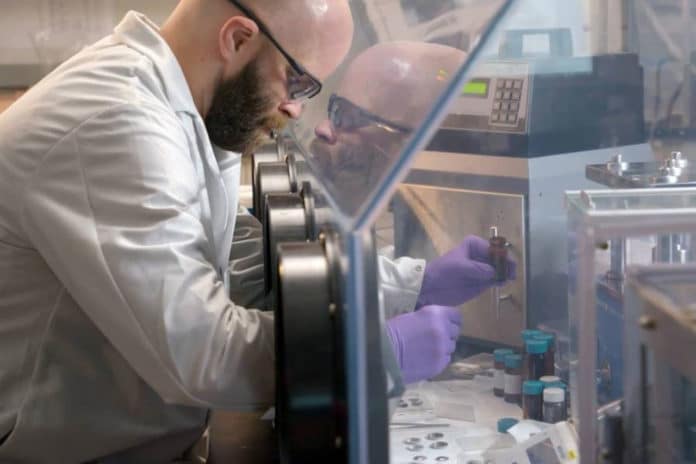Heat is the worst enemy of batteries. Likewise, existing Li-ion batteries are susceptible to catastrophic fire and explosion incidents- as they are built with flammable and combustible materials.
This is the reason that most of the cellphones were banned from airlines as a result of this danger, and the Navy’s prohibition of e-cigarettes on ships and submarines is a direct response to the need to reduce the flammability of such devices.
With the increasing demand for energy storage, the safety advancements mark a significant step forward in transforming the way Li-ion batteries are manufactured and used in electronic devices.
Focusing on this, scientists at the Johns Hopkins Applied Physics Laboratory have developed a flexible lithium-ion battery that can withstand extreme conditions- including cutting, submersion, and simulated ballistic impact.
Scientists have actually devised a new class of ‘water-in-salt’ and ‘water-in-bisalt’ electrolytes- referred to as WiS and WiBS, respectively- when incorporated in a polymer matrix, reduces water activity and elevates the battery’s energy capabilities and life cycle while ridding it of the flammable, toxic, and highly reactive solvents present in current Li-ion batteries. It’s a safe, powerful alternative.
Konstantinos Gerasopoulos of APL’s Research and Exploratory Development Department said, “Li-ion batteries are already a constant presence in our daily lives, from our phones to our cars, and continuing to improve their safety is paramount to further advancing energy storage technology. Li-ion battery form factors have not changed much since their commercialization in the early 1990s; we still use the same cylindrical or prismatic cell types. The liquid electrolyte and required hermetic packaging have a lot to do with that.”
“Our team’s efforts have generally been focused on replacing the flammable liquid with a polymer that improves safety and form factor. We are excited about where we are today. Our recent paper shows improved usability and performance of water-based flexible polymer Li-ion batteries that can be built and operated in the open air.”
“The first generation of flexible batteries were not as dimensionally stable as those we are making today.”
Scientists are continually putting their efforts to improve the safety and performance of flexible Li-ion batteries. What’s more, they have already achieved further discoveries building upon this most-recently reported work that we are very excited about.
The study is published in the journal Chemical Communications.
